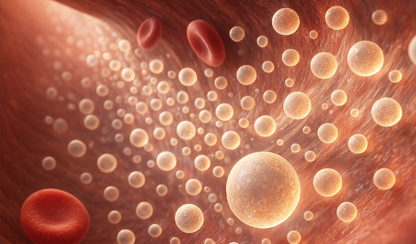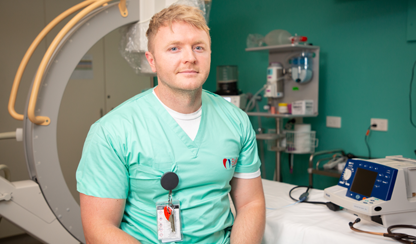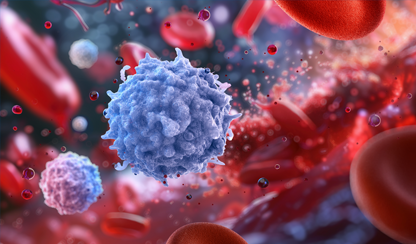19 January 2021
Media release
 Scientists have repurposed a cancer drug to show it can help reduce plaque build-up caused by diabetes, which can lead to heart attack and stroke.
Scientists have repurposed a cancer drug to show it can help reduce plaque build-up caused by diabetes, which can lead to heart attack and stroke.
Atherosclerosis — the build-up of fatty plaques on artery walls that can restrict blood flow and rupture causing dangerous blood clots — is far more common in people with diabetes, leaving them with a much greater risk of cardiovascular disease than the general population.
More than 1.5 million Australians have diabetes, and despite many years of improvements in therapies that lower blood glucose or address other cardiovascular disease (CVD) risk factors, diabetes continues to approximately double the risk of developing or dying from CVD. A drug already in development could be welcome news for these high-risk Australians.
In this preclinical animal study, published in the journal Arteriosclerosis, Thrombosis, and Vascular Biology, scientists tested low doses of a drug that is being developed to clear solid tumours and blood cancers, but has also been shown to reduce the number of platelets — small clotting cells — in the blood.
Senior author Professor Andrew Murphy, Head of the Baker Institute’s Haematopoiesis and Leukocyte Biology Lab, said his previous work showed that diabetes increased the number of platelets in the blood and this could be one factor driving increased levels of atherosclerosis.
However, people with diabetes do not tend to respond well to standard anti-platelet therapies, presenting a need for a novel target.
“By using this drug that causes physiological cell death — scientifically known as apoptosis — we reduced the numbers of platelets in the blood to ‘normal’ levels,” Professor Murphy said.
“This then decreased atherosclerosis in mice with diabetes to similar levels of animals without diabetes.
“These findings show drugs traditionally targeted to treat cancer could be repurposed at sub-toxic doses as interventions to limit cardiovascular disease in high-risk settings such as diabetes.”
Professor Murphy said reducing platelets meant there were less to interact with the white blood cells, the cells that would usually enter the blood vessels causing plaque, by reducing their ability to stick to blood vessels.
“This drug also has the ability to dampen platelet activity, so they’re not as reactive, and less likely to form dangerous clots,” he said.
Professor Murphy said the study observed no negative side effects using this low dose approach, and because other drugs are already being used to target this pathway in cancer treatment, progressing to a therapy that could be used in humans to treat cardiovascular disease could be straightforward.
He said the next step would be investigating the best application for the drug, and better understanding any risks.
This study was a collaboration with scientists at Monash University and Ohio State University
For further information or to organise interviews please contact:
Tracey Ellis
T: 03 8532 1514
M: 0433 781 972
E: tracey.ellis@baker.edu.au





